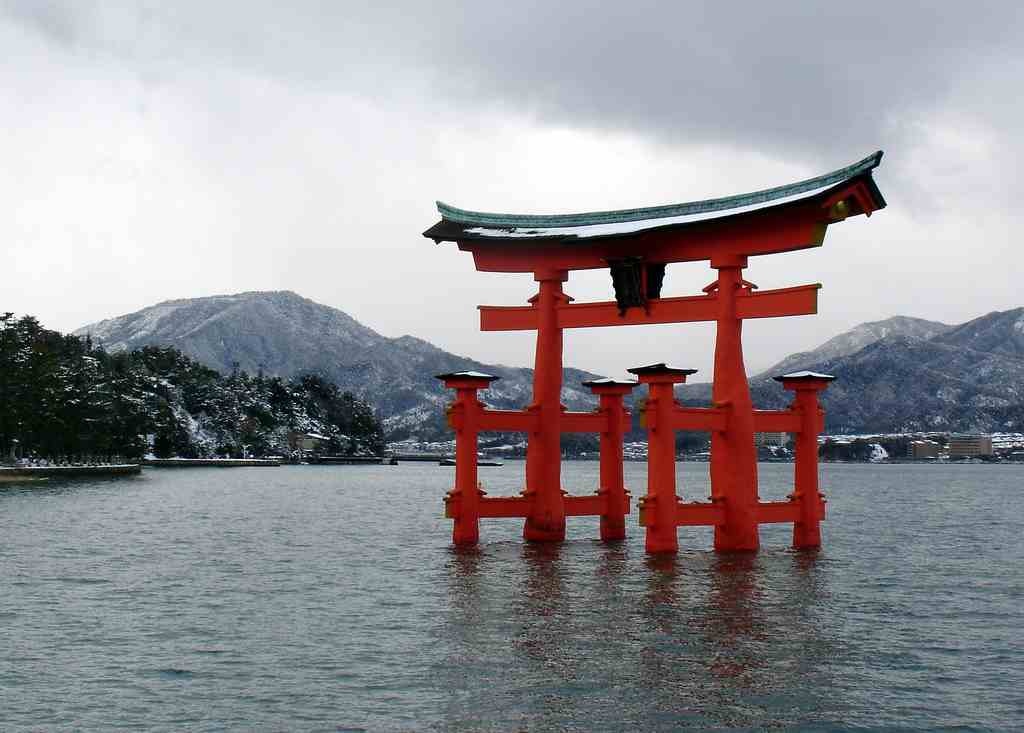Shinto and Buddhism are Japan’s two major religions. They have been coexisting for several centuries and have even complemented each other to a certain degree. Most Japanese consider themselves Buddhist, Shntoist or both.
Religion does not play a big role in the everyday life of most Japanese people today. The average person typically follows the religious rituals at ceremonies like birth, weddings and funerals may visit a shrine or temple on New Year and participates at local festivals (matsuri), most of which have a religious background.
Shinto Shrines
Shinto shrines are places of worship and dwellings of the Kami, the Shinto “gods”. Sacred objects of worship that represent the Kami are stored in the innermost chamber of the shrine where they cannot be seen by anybody.
People visit shrines in order to pay respect to the Kami or to pray for good fortune. Shrines are also visited during special events such as New Year, Sets bun, Shichigosan and other festivals. New born babies are traditionally brought to a shrine a few days after birth, and many couples hold their wedding ceremonies there.
Buddhist Temples
Temples are place of worship in Japanese Buddhism. Virtually every Japanese municipality has at least one temple, while large cultural centers like Kyoto have several thousands.
Temples store and display sacred Buddhist objects. Some temples used to be monasteries and some still function as such.
Source: Living in Japan, IPC World Inc.



























